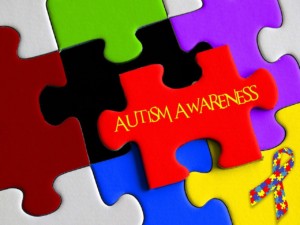April is Autism Awareness Month, aimed at increasing the understanding, acceptance and supporting those with autism. Often times those with Autism Spectrum Disorder face challenges with social and communication skills. Finding it difficult to pick up on social cues and holding a conversation.
It is common for children with Autism to also have apraxia
 The American Speech-Language-Hearing Association (ASHA) defines Apraxia of speech as ”neurologic speech disorder that reflects an impaired capacity to plan or program sensorimotor commands necessary for directing movements that result in phonetically and prosodically normal speech”
The American Speech-Language-Hearing Association (ASHA) defines Apraxia of speech as ”neurologic speech disorder that reflects an impaired capacity to plan or program sensorimotor commands necessary for directing movements that result in phonetically and prosodically normal speech”
In order for speech to occur, messages need to go from your brain to your mouth. These messages tell the muscles how and when to move to make sounds. When a child has apraxia of speech, the messages do not get through correctly. The child might not be able to move their lips or tongue in the right ways, even though their muscles are not weak. Sometimes, the child might not be able to say much at all.
A child with CAS knows what they want to say. The problem is not how the child thinks but how the brain tells the mouth muscles to move.
It is important to understand, childhood apraxia of speech is not a thinking problem, but a motor speech disorder.
A study by the Penn State Milton S Hershey Medical Center found:
It’s estimated that one in 68 children in the United States has autism and one to two in 1,000 have apraxia. With increased recognition and improved evaluation measures, more children are being identified with autism and apraxia. Developmental experts have long noted autism and apraxia seem to frequently coincide.
The researchers studied 30 children between the ages of 15 months and five years who were referred to the Penn State Hershey Pediatric Developmental Communication Assessment Clinic for concerns regarding speech, language or autism. After an initial diagnostic screening, follow-up testing showed that 63.6 percent of children initially diagnosed with autism also had apraxia and 36.8 percent of children initially diagnosed with apraxia also had autism.
Cheryl Tierney, associate professor of pediatrics, led the team that conducted the study said, “Children with apraxia have difficulty coordinating the use of their tongue, lips, mouth and jaw to accurately produce speech sounds, so that each time they say the same word, it comes out differently, and even their parents have difficulty understanding them.”
Routine visits with a speech therapies can be a game changer for those with autism and apraxia. Early intervention makes all the difference. At First Words Speech Therapy we are dedicated to meeting your child’s speech and language disorder with personalized care.


